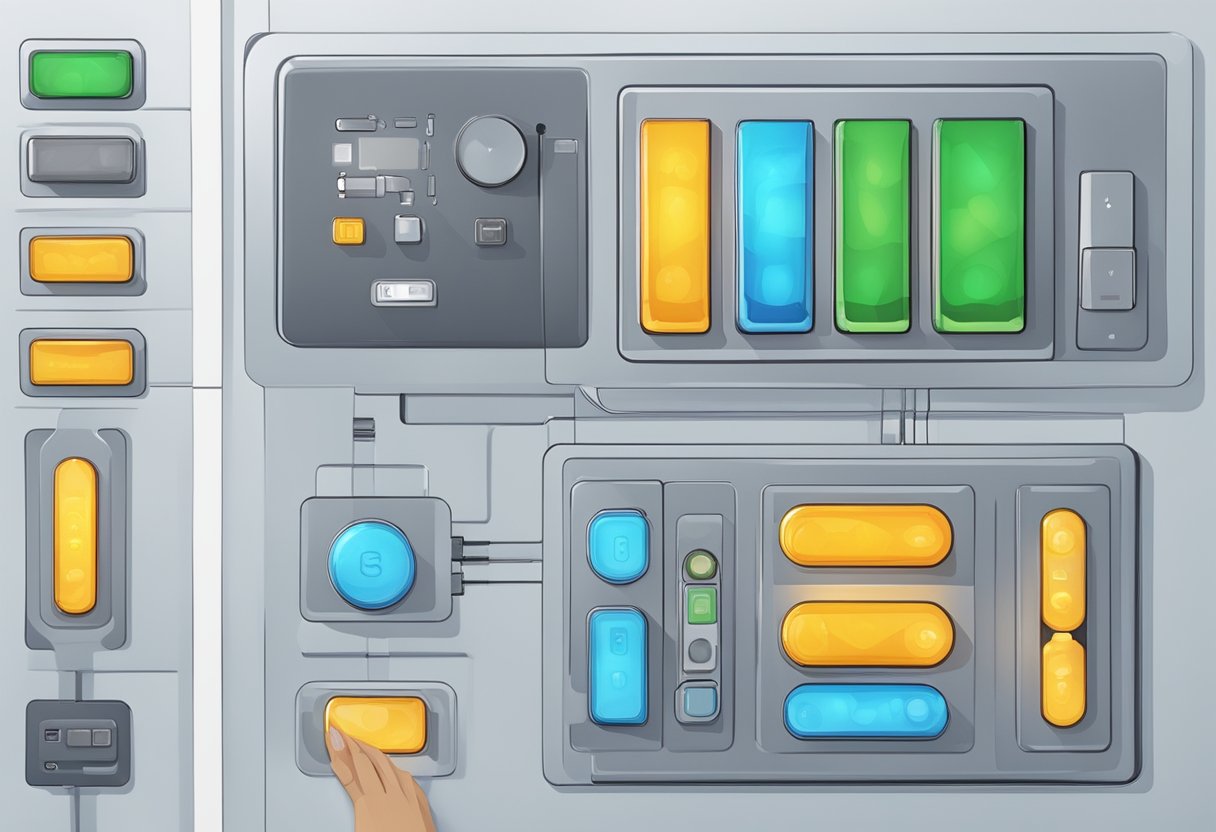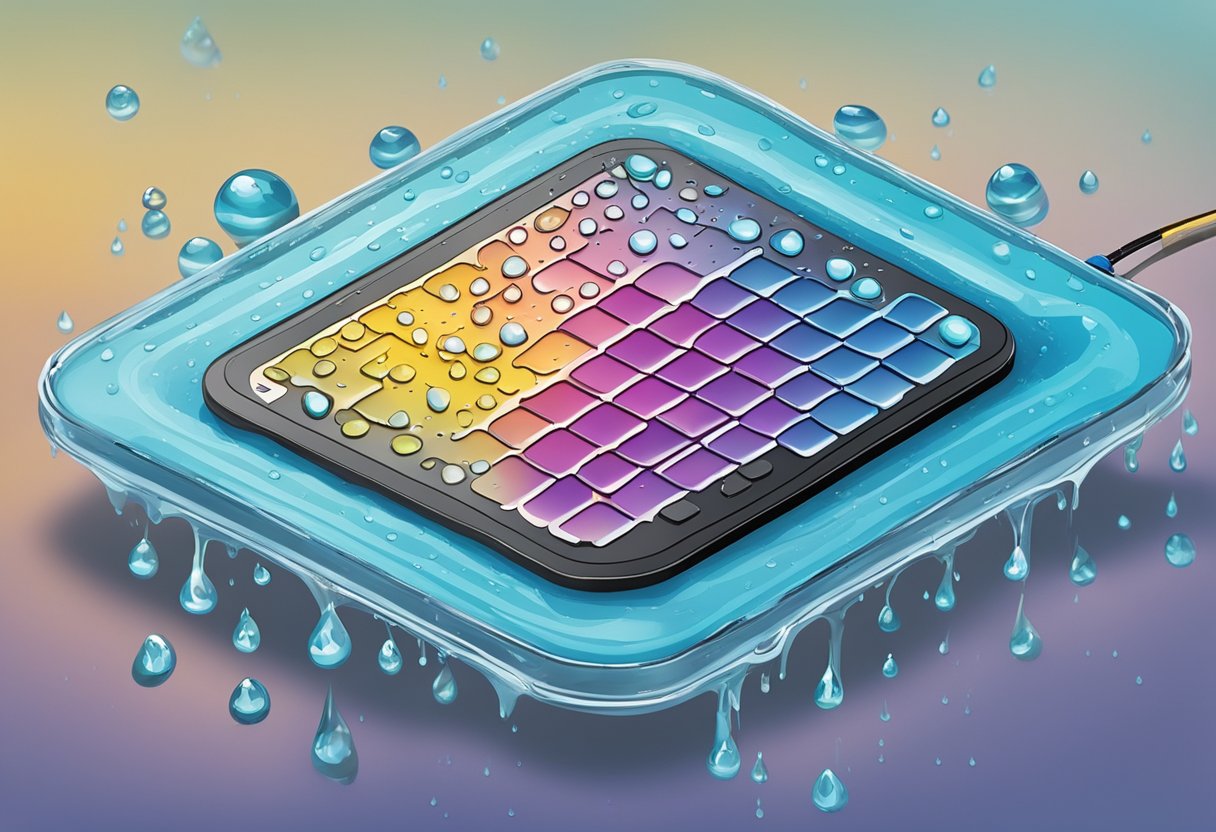Contact
Write to Us And We Would Be Happy to Advise You.
Do you have any questions, or would you like to speak directly with a representative?
By peter
If you’re in the market for a user interface technology that combines customization, waterproofing, flexibility, and durability, look no further than waterproof flexible membrane switches. These switches represent a technological breakthrough in user interface technology, offering a versatile choice for a wide range of industries. As the demand for intuitive and reliable user interfaces continues to grow, these switches are becoming increasingly popular.

Waterproof flexible membrane switches are thin, low-profile, micro-motion assemblies that resist submersion, dust, and extreme temperatures. They can function optimally even when exposed to moisture or other liquids, making them ideal for outdoor use and harsh environments. These switches are constructed using waterproof materials and watertight sealing mechanisms that keep the internal components safe from water damage.
In addition to their waterproofing capabilities, membrane switches are also highly customizable. They can be designed to meet the specific needs of your application, with a wide range of options for layout, size, shape, and color. This level of customization makes them an excellent choice for a wide range of industries, including medical devices, aerospace, automotive, and more.

Waterproof flexible membrane switches are a type of user interface technology that has gained popularity in recent years. They are used in a wide range of industries, including medical, aerospace, and automotive. This section will cover the composition and materials used in these switches, as well as the waterproofing techniques that make them durable and reliable.
Waterproof flexible membrane switches consist of several layers of flexible materials, including polyester and polycarbonate. These layers are equipped with conductive traces that form electrical connections when pressure is applied to the switch’s surface. A top graphic overlay not only provides tactile feedback but also protects the switch from wear and tear.
The layers of a membrane switch are typically bonded together using adhesives. The adhesive used must be strong enough to hold the layers together, but also flexible enough to allow the switch to bend and flex without breaking. The adhesive also needs to be waterproof to ensure that the switch remains functional even when exposed to moisture or other liquids.
There are several techniques used to make waterproof flexible membrane switches. One technique involves using a silicone rubber sealant to create a watertight barrier around the edges of the switch. This technique is effective but can be time-consuming and expensive.
Another technique involves using a waterproof coating on the surface of the switch. This coating is typically made of a polymer material that repels water and other liquids. This technique is less expensive than using a silicone rubber sealant but may not be as effective in extreme conditions.
In conclusion, waterproof flexible membrane switches are a versatile and reliable user interface technology. They are composed of several layers of flexible materials and are waterproofed using various techniques. These switches are used in a wide range of industries and are an excellent choice for applications that require durability, flexibility, and waterproofing.

When designing waterproof membrane switches, there are several important factors to consider to ensure that the switch is functional, reliable, and aesthetically pleasing. Some of the key design considerations for waterproof membrane switches are discussed below.
One of the most important design considerations for waterproof membrane switches is the electrical specifications. The switch must have the appropriate electrical properties to ensure that it is compatible with the device it is being used in. This includes factors such as the voltage and current rating, contact resistance, and actuation force. It is important to consult the device specifications to ensure that the switch meets the necessary electrical requirements.
Another important consideration for waterproof membrane switches is the environmental tolerance. The switch must be able to withstand exposure to moisture, dust, and other environmental factors without compromising its functionality. This includes factors such as the IP rating, which indicates the level of protection against dust and water, and the operating temperature range. It is important to select materials that are resistant to moisture and other environmental factors to ensure that the switch remains functional over time.
In addition to the electrical and environmental factors, it is also important to consider ergonomic and aesthetic factors when designing waterproof membrane switches. The switch should be designed with the user in mind, with a comfortable and intuitive layout that is easy to use. The switch should also be aesthetically pleasing, with a design that complements the overall look and feel of the device it is being used in. This includes factors such as the size, shape, and color of the switch, as well as the texture and feel of the surface.
Overall, designing waterproof membrane switches requires careful consideration of several important factors, including electrical specifications, environmental tolerance, and ergonomic and aesthetic factors. By taking these factors into account, it is possible to design switches that are functional, reliable, and aesthetically pleasing, and that meet the necessary requirements for use in a range of devices and applications.
The manufacturing of waterproof flexible membrane switches involves several key steps that require precision and attention to detail. The process begins with the design and prototyping of the switch, followed by the printing and cutting of the switch layers, and finally, the assembly and sealing of the switch layers.
The printing and cutting of the switch layers involve the use of specialized equipment to ensure accuracy and consistency. The switch layers are printed onto a flexible substrate using conductive inks, which are then cut into the desired shape using a laser cutter or a die-cutting machine.
The assembly and sealing of the switch layers are critical to ensuring the switch’s waterproof and dustproof properties. The layers are assembled using an adhesive, which is applied to the back of each layer. Once the layers are in place, the switch is sealed using a waterproof and dustproof sealant, which is applied around the edges of the switch.
Overall, the manufacturing of waterproof flexible membrane switches requires a high level of expertise and attention to detail. By following the proper manufacturing processes, manufacturers can produce high-quality switches that are durable, reliable, and long-lasting.
When it comes to waterproof flexible membrane switches, testing and certification are critical to ensure reliability and durability. In this section, we will discuss the IP rating standards and quality assurance tests that are commonly used to certify membrane switches.
The International Protection (IP) rating system is used to classify the degree of protection provided by a membrane switch against solid objects and liquids. The first digit of the IP rating indicates the level of protection against solid objects, while the second digit indicates the level of protection against liquids.
For example, an IP68 rating means that the membrane switch is completely dust-tight and can withstand continuous immersion in water. On the other hand, an IP54 rating means that the membrane switch is protected against dust and splashing water from any direction.
In addition to IP rating standards, quality assurance tests are also important to ensure the reliability and durability of membrane switches. Some of the commonly used quality assurance tests include:
In conclusion, testing and certification are critical to ensure the reliability and durability of waterproof flexible membrane switches. By adhering to IP rating standards and quality assurance tests, membrane switch manufacturers can ensure that their products meet the required specifications and provide a reliable solution for various applications.
Waterproof flexible membrane switches find applications in a wide range of industries, including consumer electronics, industrial controls, and medical devices.
Waterproof flexible membrane switches are commonly used in consumer electronics such as wearable devices, mobile phones, and remote controls. These switches are ideal for consumer electronics due to their low profile, durability, and resistance to water and dust. Additionally, they can be customized to meet specific design requirements, making them a popular choice for manufacturers.
Waterproof flexible membrane switches are also widely used in industrial controls such as machinery, equipment, and instruments. These switches are designed to withstand harsh environments and can be operated with gloves, which is essential for workers in industries such as construction, mining, and oil and gas. They are also easy to clean, making them ideal for use in environments where hygiene is a concern.
Waterproof flexible membrane switches are commonly used in medical devices such as patient monitoring systems, diagnostic equipment, and drug delivery devices. These switches are ideal for medical devices due to their low profile, durability, and resistance to water and dust. Additionally, they are easy to clean and can be customized to meet specific design requirements, making them a popular choice for medical device manufacturers.
In summary, waterproof flexible membrane switches find applications in a wide range of industries, including consumer electronics, industrial controls, and medical devices. These switches are ideal for use in harsh environments and can be customized to meet specific design requirements.
Do you have any questions, or would you like to speak directly with a representative?